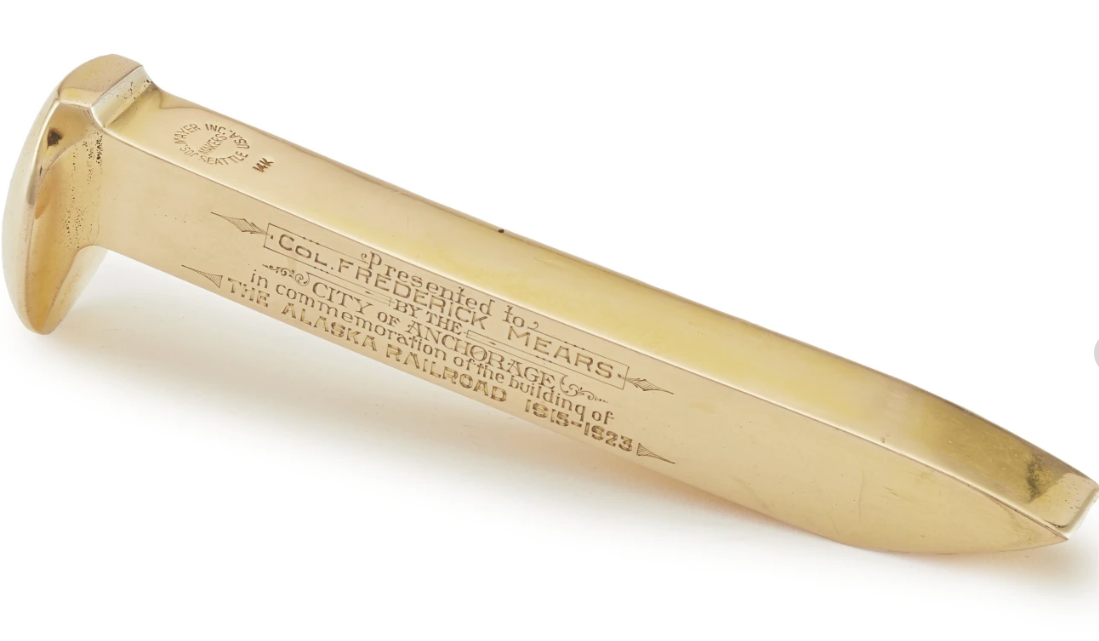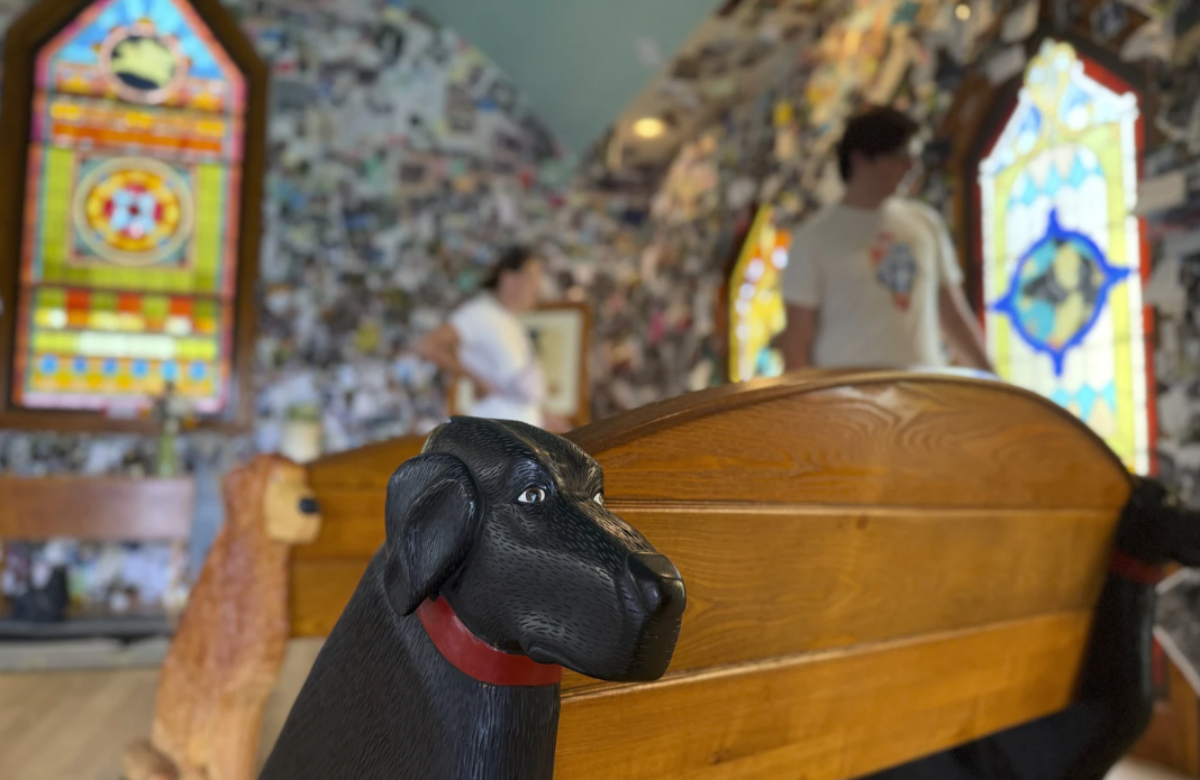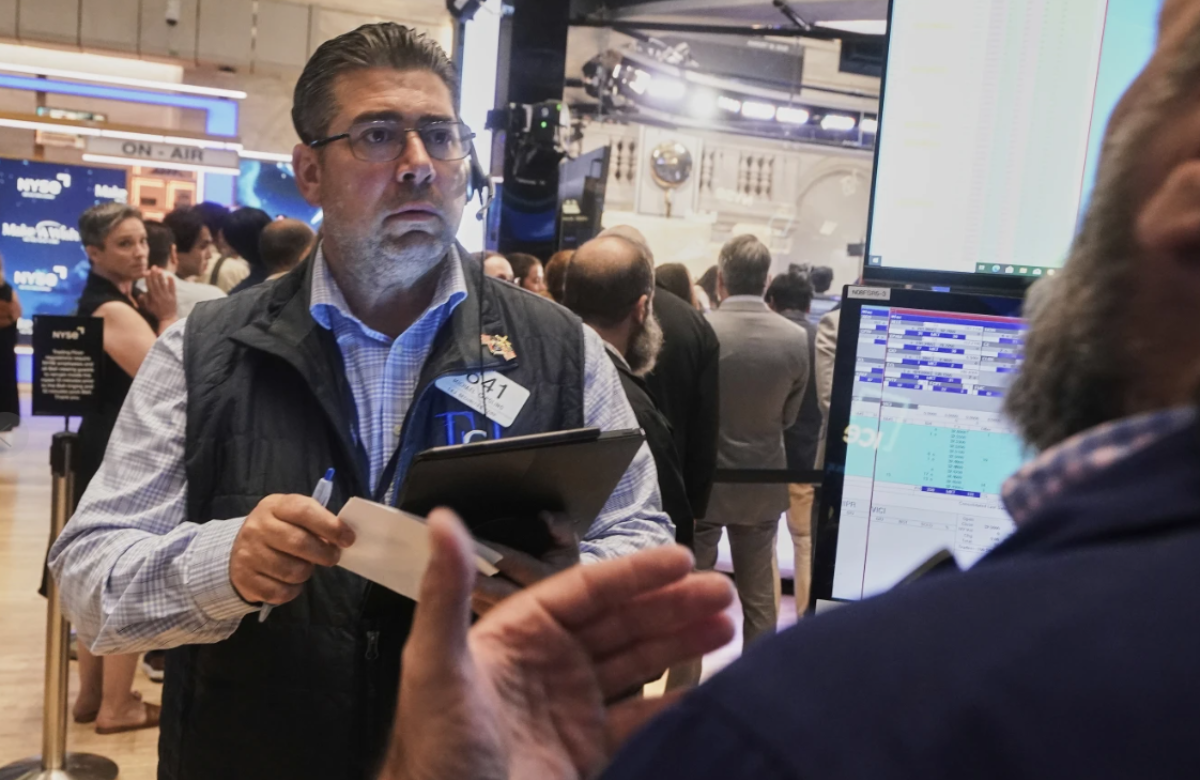The golden spike, which was used to complete the Alaska Railroad more than a century ago, will now be permanently displayed in Alaska for the first time. A combined effort from the Anchorage Museum, the city of Nenana, and contributions from private donors and the Alaska Railroad helped secure the artifact at a Christie’s auction in New York. The final bid amounted to $201,600, which was over four times the initial estimate of $50,000, with a 26% premium added by the auction house.
Julie Decker, the director and CEO of the Anchorage Museum, expressed excitement about partnering with Nenana to present this important historical item to the public. She described the Golden Spike as a significant symbol of history, people, and place. The two cities plan to alternate the display of the spike between them.
Nenana Mayor Joshua Verhagen expressed his excitement about the collaboration between the urban and rural communities along the rail belt. He described it as a great story of unity for a worthy cause and looked forward to further connecting the two communities through the shared significance of the Golden Spike.
The construction of the railroad, which began in 1914, aimed to connect Seward, a port city on the south-central coast, to Fairbanks, located 470 miles (756 kilometers) away. This major infrastructure project was designed to facilitate the transport of coal and other minerals from interior Alaska.
The project was led by U.S. Army Colonel Frederick Mears, who was reassigned to Seattle just four months before the project’s completion. As a gesture of appreciation for his work, the city of Anchorage presented Mears with a golden spike.
The golden spike was sent back to Seattle for a ceremony attended by President Warren G. Harding. On July 15, 1923, near Nenana, Harding tapped the 5 1/2-inch (14-centimeter) spike twice before replacing it with a regular one to drive into the final coupling. Shortly after, the golden spike was returned to Mears, and Harding returned to Washington. However, just a few weeks later, on August 2, 1923, Harding tragically passed away from a heart attack in San Francisco.
The golden spike had been privately owned outside of Alaska since its use in the railroad’s completion. A seller from California had possessed the spike since 1983 before deciding to auction it off.
Christopher June, a specialist at Christie’s, expressed his pride in handling the sale of such a significant piece of Alaskan history. As an Anchorage native, he added that he was especially pleased that the spike would now be returned to the people of Alaska, his home state.















